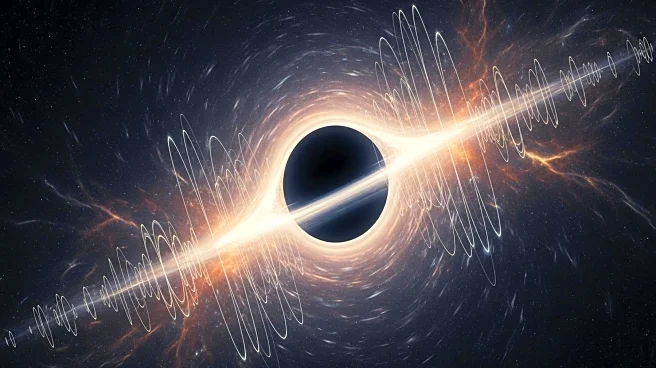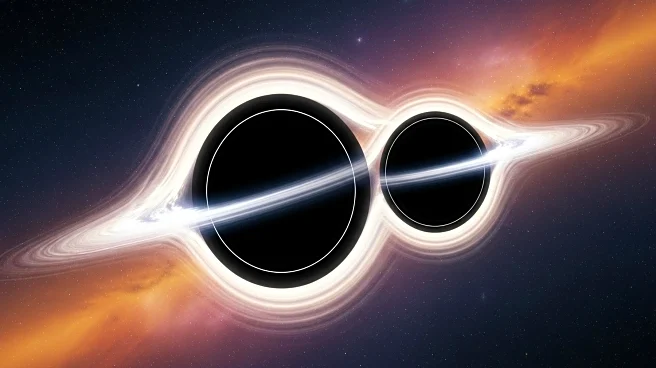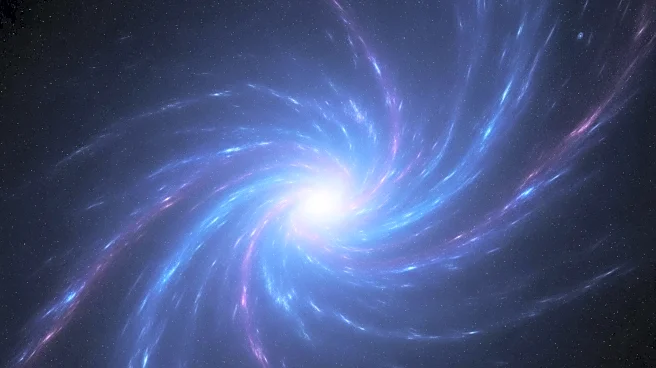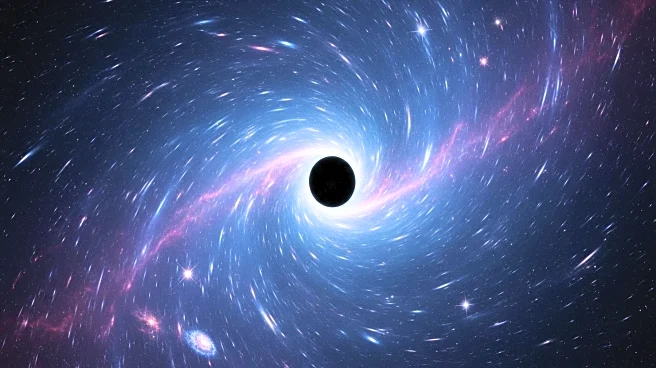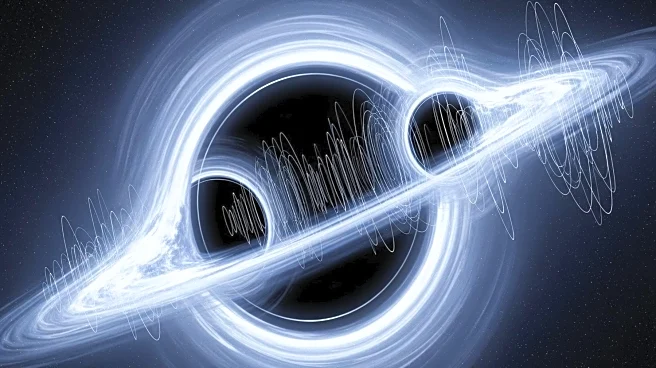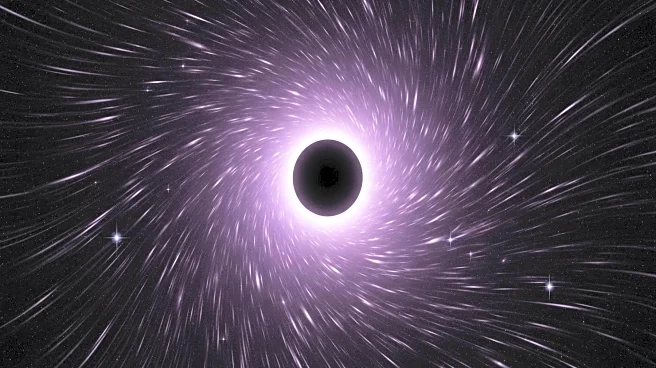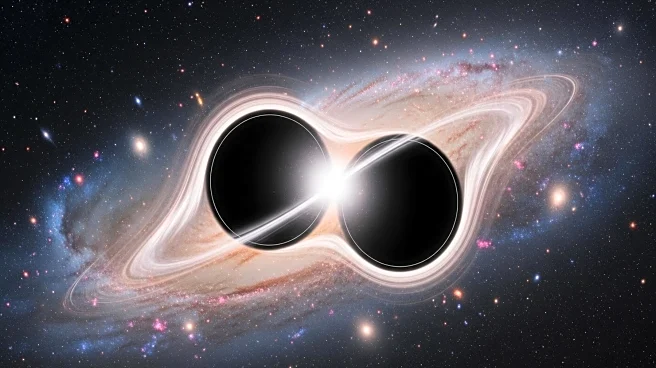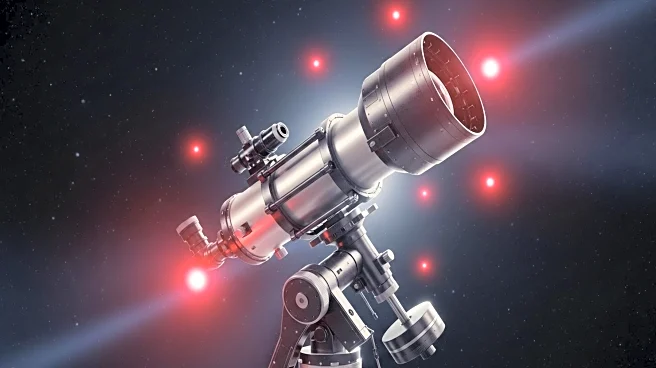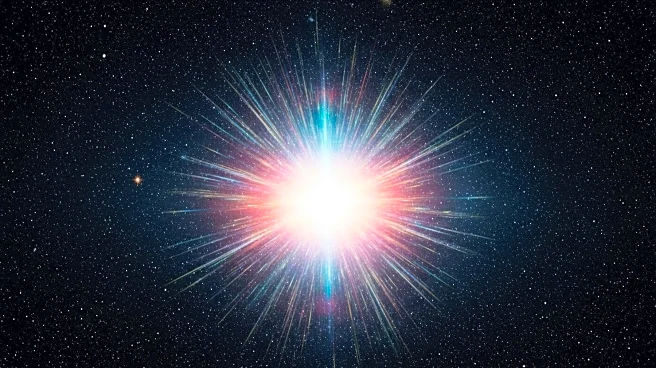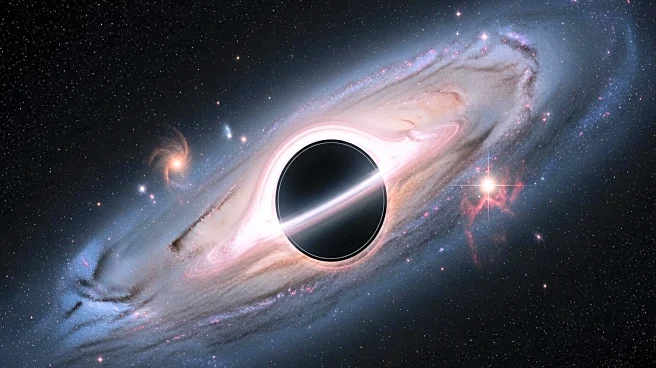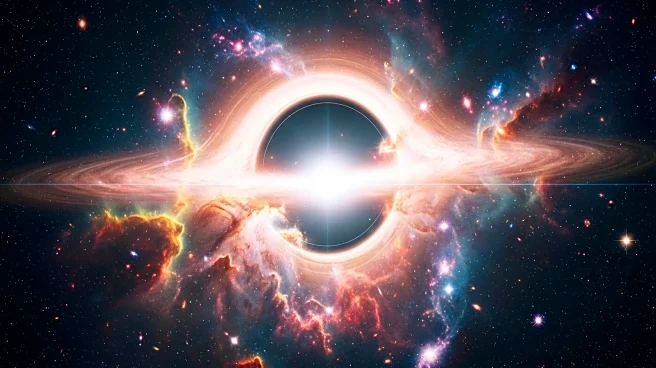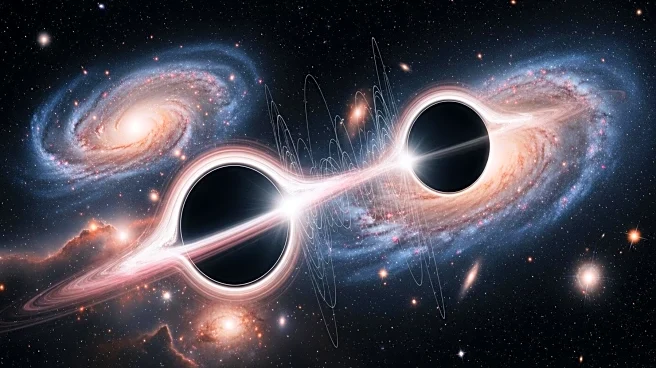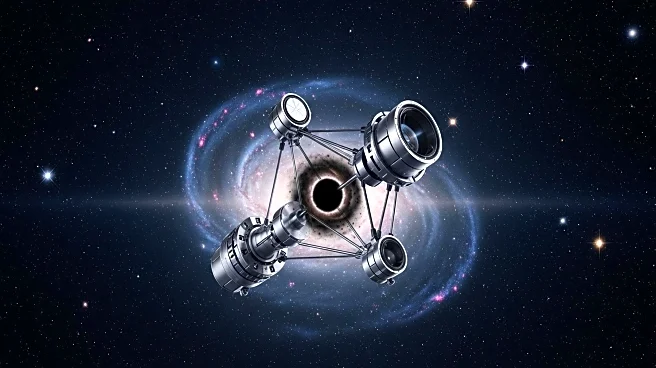What is the story about?
What's Happening?
An international research team has successfully measured the speed and direction of a recoiling black hole, a phenomenon resulting from a merger detected in 2019. Using the Laser Interferometer Gravitational-Wave Observatory (LIGO), scientists observed the black hole kicking away at speeds exceeding 50 kilometers per second, escaping its globular cluster. This marks a significant achievement in astrophysics, as researchers reconstructed the full 3D motion of an object billions of light-years away using gravitational waves. Dr. Koustav Chandra from Penn State highlighted the importance of this discovery, emphasizing the capabilities of gravitational waves in providing detailed information about massive cosmic events.
Why It's Important?
The ability to measure the recoil of black holes has profound implications for understanding the dynamics of cosmic collisions and the behavior of black holes. This discovery enhances the scientific community's ability to study the universe's evolution and the role of gravitational waves in shaping cosmic structures. It also opens new avenues for research into the formation and behavior of black holes, potentially leading to breakthroughs in theoretical physics and cosmology. The findings could influence future studies on the distribution and movement of black holes across the universe.
What's Next?
Researchers are likely to continue utilizing LIGO and other advanced instruments to observe similar phenomena, aiming to gather more data on black hole mergers and their aftermath. This could lead to improved models of black hole behavior and further insights into the universe's structure. The scientific community may also explore the implications of these findings for understanding the fundamental laws of physics and the nature of spacetime.
Beyond the Headlines
The detection of recoiling black holes could challenge existing theories about the stability and distribution of black holes in the universe. It may prompt a reevaluation of how gravitational waves are used to study cosmic events, potentially leading to new methodologies in astrophysical research.
AI Generated Content
Do you find this article useful?
